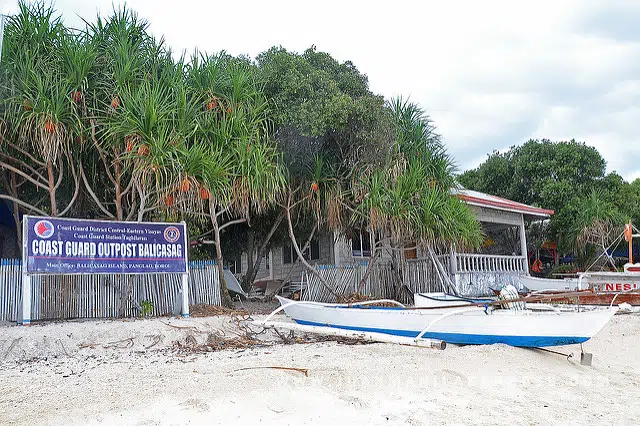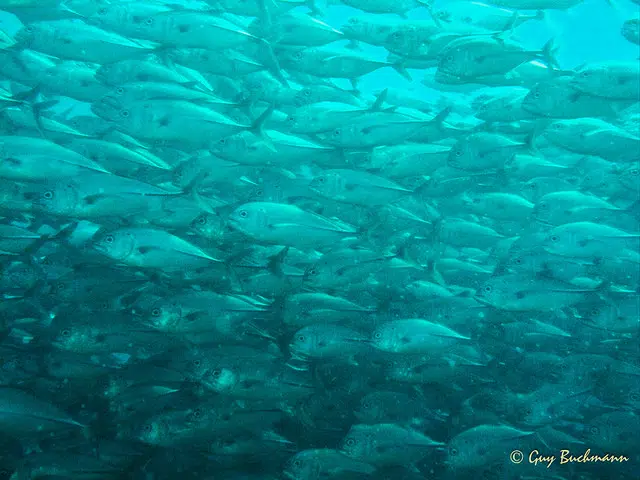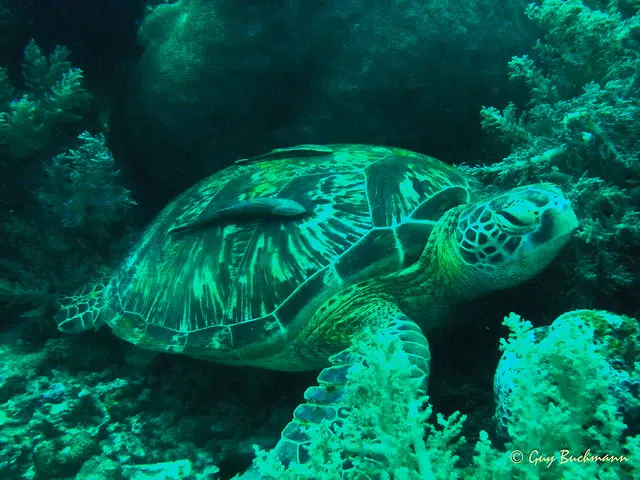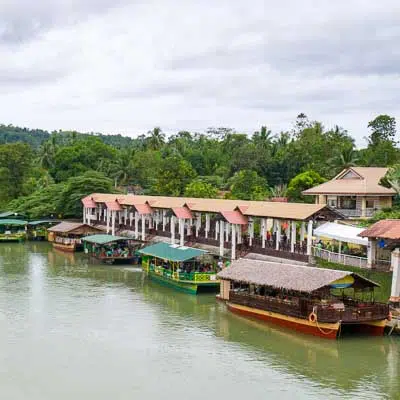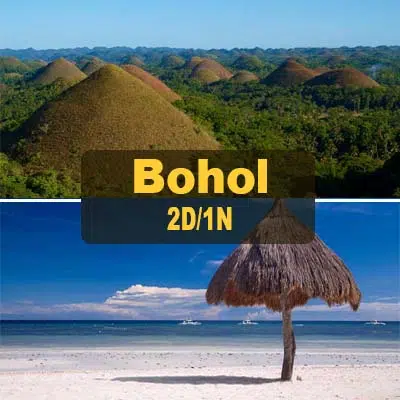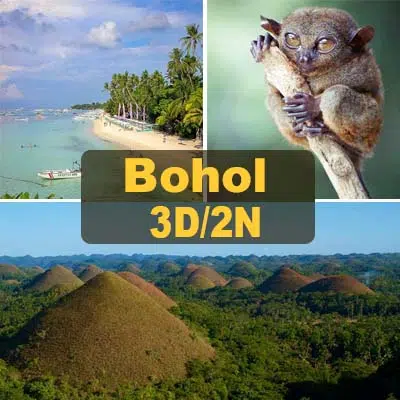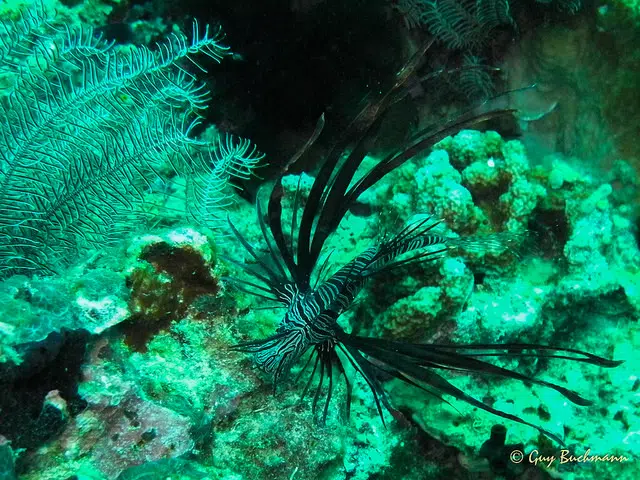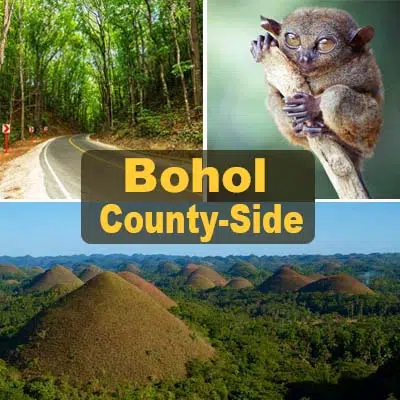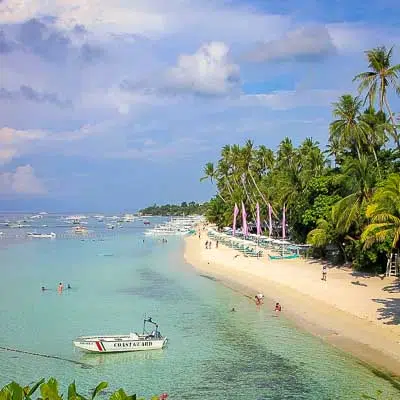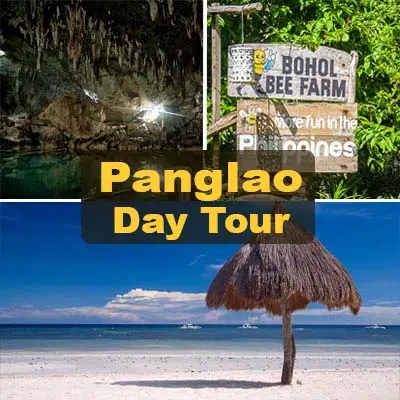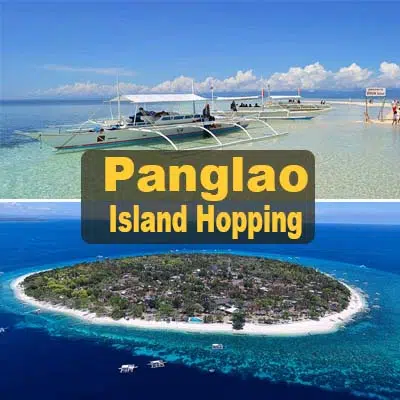Located off Panglao Island in Bohol, is an island called Balicasag. 1.5 hectares out of its total 25 hectares have been developed into a resort. The island’s crystal blue waters provide a clear, vivid view of its corals, fishes and other marine life.
The resort is frequented by divers, foreign and local. It has a dive shop which offers instructions on scuba diving. Of interest are shells and fresh fish that are sold by the islanders to guests of the resort.
Balicasag is a mere speck on any map of the central Philippines, lying some 60 kms to the southwest of a small island called Panglao, off the southwest tip of Bohol. Although not quite deserted, it conforms pretty well to the desert island stereotype; a flat, circular island covered in palm trees and bouganvillea, and fringed by a shell and corraline beach. There’s a definite wilderness feeling about the place – which for many is part of the island’s appeal.
Most striking is its size: at just 25 hectares you can walk all the way around it in 45 minutes, and yet there is still room for much more than just the small lighthouse tower in the middle of the island. There’s a local community of about 100 families, many of whom make a living from collecting rare shells and selling them to tourists on the beach. Balicasag Island Dive Resort, the island’s only scuba facility, is on the south side. With only 20 traditional-style bungalows lining the beach, the island is never crowded, either above or below the water.
Reading through this description, you might get the feeling that Balicasag is as remote and inaccessible as far-flung Tubbataha – which can only be reached by live-aboards. But although it rivals Tubbataha for quality of diving, Balicasag really requires no more than a modest amount of effort and time to get to. Its proximity to mainland Bohol, which has good air and sea connections with the rest of the archipaelago, ensures that reaching the island from the major Philippine travel hubs of Manila or Cebu is ussually a matter of a few hours rather than several days.
RESORT WALL – The wall right in front of the resort has excellent diving. There are slightly stronger currents here than at other spots around the island, which means there’s alot of nutrient mixing in the water. The result is reef life that’s particularly active and colourful. The wall starts about 30-50 meters(90-150 feet) off the beach, in approximately 2-3 meters (6-9 feet) of water. The fringe reef here is flat and relatively smooth, mostly covered in seaweed and a few rocks, allowing comfortable entries and exits from the beach. There are superb sea fans and a proliferation of reef fish – including dozens of lionfish and scorpionfish.
BLACK CORAL FOREST – The rare opportunity to swim through a “forest” of black coral makes this dive an experience not to be missed. Although this form of coral is usually found below 50 meters (150 feet), there’s an area on the northern tip of the island where it grows at a surprisingly shallow 30 meters (90 feet).
Biologists have speculated that the shadow of the island combined with the coolness and nutrients provided by currents and upwellings “deceive” the coral into thinking its at greater depth. The forest of bush-like coral has taken root on a portion of the reef whee ledges and rock faces are interspersed with patches of sloping sand. The coral trees are set wide enough apart for you to be able to fin gently among them, altough you must take great care not to damage any of them. Apart from the black coral, you’ll also see schools of tropical fish – such as morrfish idols, batfish and lionfish – along with assorted nudibranches, including Spanish dancers.
It’s best to time your dive here for a slack tide, or else make sure you have a boat ready to pick up if the currents are strong.
CATHEDRAL WALL – Situated on the southwest side of the island close to the resort, this craggy section of wall has many caves and recesses which are great fun to explore. You’ll need to carry a torch to bring out the relief in the walls and illuminate the activity of the caves. The reward is a kaleidoscope of marine life, including brilliant reef fish which dart around among flourished corals and sponges, and schools of big jacks which idle along in the current.
TURTLE POINT – This dive takes you down the drop-off on the eastern side of the island, and gets its name from the turtles which hide in caves about 20-25 meters (60-75 feet) down. The key word is “hide”. Don’t be surprised if turtles do not materialize immediately: be patient, and if you’re lucky you’ll soon see what one diver described as a “B-52 sized” turtle swim out of its lair. While you wait, you can enjoy the scenery on the wall outside the caves: cushion stars, a profusion of feather stars, and a vast variety of reef fish, including lionfish and triggerfish. Mackerel are also common. In the shallower water here anemones, always with their resident clownfish, are abundant.
THE CAVERN – Just a few hundred meters northeast of the resort there are several small caves about 20-25 meters(60-75 feet) down the drop-off wall. While these caves and adjoining walls are interesting in themselves, the recommended procedure is to sit inside the cavesm relax and wait for big fish to pass by. A particularly interesting time to dive here is just before sunset – which reef biologists describe as “turnover” time – when daytime and night-time organisms change shifts, feed and breed. You’re guaranteed underwater activity. Note that the shallowness of the reef at this site can make diving from a boat very tricky at low tide, especially if there’s a prevailing northeasterly wind.

